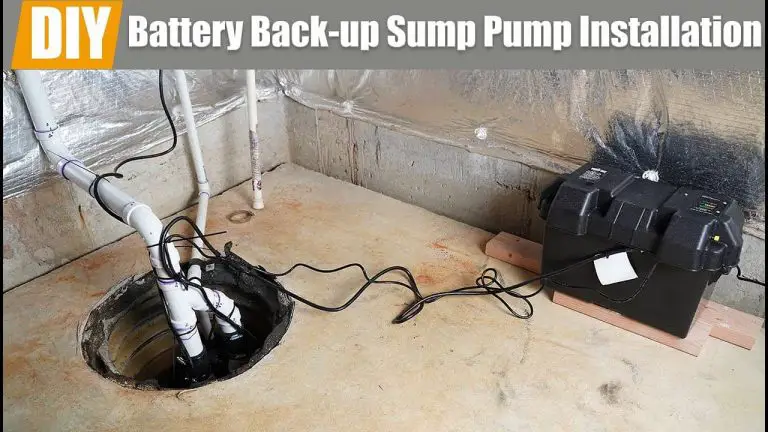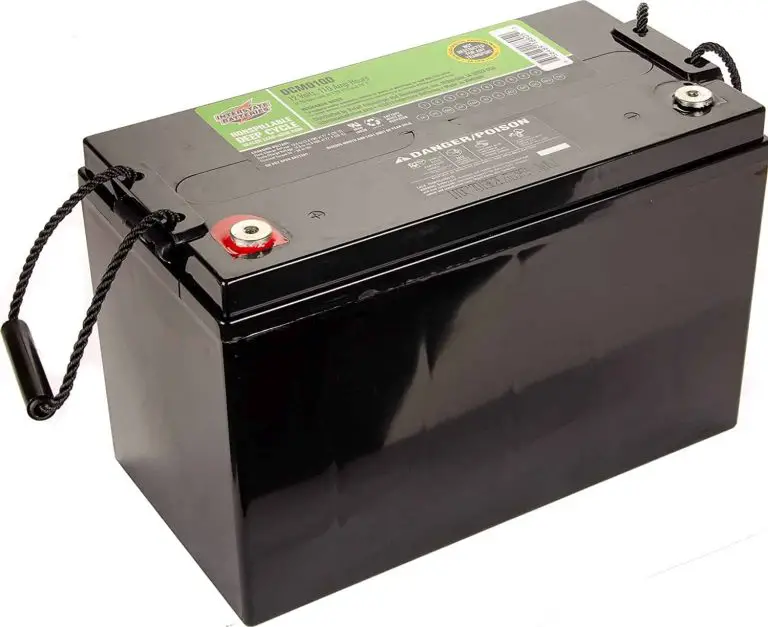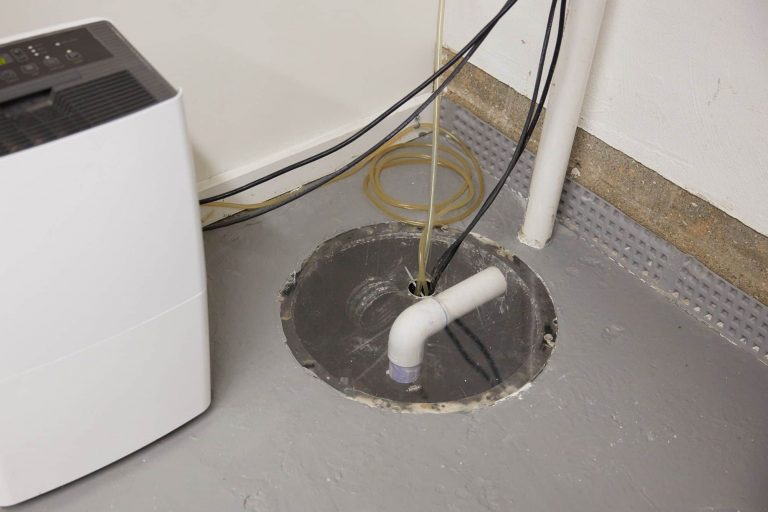Can I Drain My Sump Pump Into The Sewer
Sump pumps are a crucial part of any home’s plumbing system, helping to prevent flooding and water damage. However, when it comes to discharging the excess water from your sump pump, many homeowners are left wondering about their options. One question that often arises is whether it’s safe to drain your sump pump into the sewer.
While this may seem like a straightforward solution, there are several factors to consider before making such a decision. In this article, we’ll take a closer look at the pros and cons of draining your sump pump into the sewer, and what you need to know before doing so.
How Does the Sewer System Work?
The sewer system is a network of underground pipes that are designed to transport wastewater from homes, businesses, and industries to treatment facilities. The system is typically made up of two types of pipes: sanitary sewers and storm sewers.
Sanitary sewers carry water from toilets, sinks, showers, and other places in the house to treatment plants. These plants clean and disinfect the water so that it is good for the environment. Storm sewers, on the other hand, are designed to carry rainwater and other runoff away from streets and buildings to prevent flooding.
The sewer system works through the force of gravity. Wastewater goes down through the pipes until it reaches a treatment plant or pumping station. The water is then taken to a higher place so that it can continue its journey. It’s important to note that not all areas have combined sewer systems.
In some places, stormwater runoff is kept separate from sewage in what’s known as a separated sewer system. In these cases, stormwater is typically discharged directly into local waterways without first being treated.All in all, the sewer system plays an important role in keeping our communities healthy and safe. It takes wastewater away from our homes and businesses for treatment.
Sump Pump Drainage: What You Need to Know
There are some essential things you need to know when it comes to sump pump drainage. A sump pump is designed to remove water that accumulates in your basement or crawl space and direct it away from your home’s foundation. Proper drainage is essential for preventing basement flooding and water damage.
There are several common options for sump pump drainage, including discharging the water into a storm drain or creek, or onto your lawn or garden. However, some homeowners may consider draining their sump pump into the sewer system as an option. Before considering this option, it’s important to understand how the sewer system works.
The sewer system is designed to collect wastewater from homes and businesses and transport it to a treatment facility. The treated wastewater is then discharged into a nearby body of water. While it may be tempting to drain your sump pump into the sewer system, it’s not always legal.
In some areas, it’s illegal to discharge any type of water into the sewer system other than sanitary waste. This includes sump pump discharge, which can overload the sewer system and cause backups and overflows. Even if it is legal in your area, there are several reasons why you shouldn’t drain your sump pump into the sewer system.
First, excess water can overwhelm the treatment facility and cause untreated wastewater to be discharged into nearby bodies of water. This can have serious environmental consequences. Secondly, draining your sump pump into the sewer system can increase your monthly utility bill. Many utilities charge based on the amount of wastewater that enters the treatment facility. By adding extra water from your sump pump discharge, you could end up paying more each month.
Fortunately, there are alternatives to draining your sump pump into the sewer system. One option is to use a dry well, which collects excess water and directs it back into the ground through small holes in its walls. Another option is to discharge water onto your lawn or garden where it can be absorbed by plants and soil. If neither of these options is feasible for you, consider redirecting the water to a storm drain or creek instead.
Just make sure that you’re not violating any local ordinances or regulations before doing so. While it may seem like an easy solution, draining your sump pump into the sewer system is not always legal or environmentally responsible.
Is Draining Your Sump Pump into the Sewer Legal?
Draining your sump pump into the sewer may seem like a convenient option, but is it legal? The answer is not straightforward and depends on your local laws and regulations. In some areas, it may be legal to drain your sump pump into the sewer, as long as you have obtained a permit from the local authorities.
However, in other areas, it may be strictly prohibited due to environmental concerns. Sewer systems are designed to handle human waste and wastewater from household activities such as showering, washing dishes, and doing laundry. They are not equipped to handle large amounts of water that come from sump pumps during heavy rain or flooding. This can overwhelm the system and cause sewage backups or overflows.
Additionally, discharging sump pump water into the sewer can increase treatment costs for municipalities since they need to treat this excess water. This can lead to higher utility bills for homeowners. Moreover, draining sump pump water into the sewer can also harm the environment by polluting nearby bodies of water. The excess water contains pollutants such as oil, grease, pesticides, and fertilizers that can harm aquatic life and degrade water quality.
Therefore, it’s important to consider alternatives to draining your sump pump into the sewer. Some options include using a dry well on your property, discharging water to a storm drain or creek, or redirecting water to your lawn or garden where it can be absorbed by plants and soil.
While it may be legal in some areas to drain your sump pump into the sewer with a permit, it’s important to consider the cost and potential negative impact on the environment. Exploring alternative drainage options may ultimately be more beneficial for all parties involved.
Reasons Why You Shouldn’t Drain Your Sump Pump into the Sewer
Draining your sump pump into the sewer might seem like a convenient option, but it’s not always the best. There are several reasons why you should avoid this practice. Firstly, it may be illegal in your area. Many municipalities have regulations that prohibit homeowners from discharging sump pump water into the sewer system. This is because excess water can overwhelm the sewer system and lead to sewage backups or overflows.
Secondly, it can be harmful to the environment. Sump pumps remove groundwater that would otherwise seep into the soil and replenish aquifers. When you drain sump pump water into the sewer, you’re taking this water out of the natural cycle and putting more pressure on the city’s treatment plants.
Thirdly, it can increase your utility bills. If your municipality charges for wastewater treatment based on usage, draining sump pump water into the sewer can result in higher bills. Even if there are no additional charges, you’ll still be paying for electricity to power your sump pump unnecessarily.
Lastly, it can cause problems with your plumbing. Sump pumps often discharge large volumes of water quickly. This sudden influx of water can overload your plumbing system and cause backups or leaks. Considering these factors, it’s clear that draining your sump pump into the sewer isn’t always a good idea.
But what are some alternatives? You could consider using a dry well, discharging onto your lawn or garden, or redirecting water to a storm drain or creek. Each of these options has its own benefits and drawbacks, so it’s important to weigh them carefully before making a decision.
Alternatives to Draining Your Sump Pump into the Sewer
If you are looking for alternatives to draining the water into the sewer system, there are some alternate methods. While it may seem like a convenient option, there are several reasons why it’s not recommended.
One alternative is using a dry well. A dry well is a structure that collects and stores excess water from your sump pump. The water is then slowly released into the surrounding soil over time, preventing flooding and erosion. Dry wells can be installed in your yard or basement and can vary in size depending on your needs.
Another option is discharging water onto your lawn or garden. This method involves directing the water from your sump pump onto your lawn or garden through a hose or pipe. This not only helps prevent flooding but also provides much-needed hydration for your plants.
If you live near a storm drain or creek, redirecting the water there can also be an effective solution. However, it’s important to check local regulations before doing so as some areas have restrictions on where you can discharge sump pump water.
In the end, choosing an alternative to draining your sump pump into the sewer system is not only better for the environment, but also helps prevent sewage backups and potential problems. It’s important to weigh all options and choose one that works best for your specific situation.
Using a Dry Well
A dry well is a great alternative to draining your sump pump into the sewer. It is an underground structure that allows water to slowly seep into the surrounding soil, which helps prevent flooding and erosion. To create a dry well, you will need to dig a hole in your yard and line it with gravel or other permeable materials.
The sump pump discharge pipe can then be directed into the dry well, allowing the water to filter through the gravel and into the ground. One of the advantages of using a dry well is that it helps recharge groundwater supplies. This is because the water slowly filters through the soil, which helps replenish local aquifers.
Additionally, using a dry well can help reduce stormwater runoff, which can help prevent erosion and pollution. It’s important to note that before installing a dry well, you should check with your local building codes and regulations.
Some areas may have specific requirements for how deep the hole needs to be or what materials can be used for lining it. Overall, using a dry well as an alternative to draining your sump pump into the sewer is an environmentally-friendly way to protect our natural resources and prevent flooding.
Discharging Water onto Your Lawn or Garden
One alternative to draining your sump pump into the sewer is to discharge the water onto your lawn or garden. This option not only helps avoid potential legal issues, but it can also benefit your landscaping.
When discharging water onto your lawn or garden, it’s important to consider the location and amount of water being discharged. If too much water is released in one area, it can lead to over saturation and damage to plants and grass.
Additionally, if the water contains chemicals or pollutants, it can harm the environment. To prevent these issues, you can use a soaker hose or a drip irrigation system to distribute the water evenly across your lawn or garden. These methods allow for slow and consistent watering that won’t overwhelm the area.
Another option is to create a rain garden. A rain garden is a depression in the ground that collects and filters rainwater runoff from your property. By directing your sump pump into a rain garden, you can help reduce erosion and filter out pollutants before they reach the local water supply.
It’s important to note that discharging sump pump water onto your lawn or garden may not be feasible for all homeowners. If you have limited space or live in an area with strict regulations on outdoor water usage, this option may not be viable.
Discharging sump pump water onto your lawn or garden is a viable alternative to draining it into the sewer system. By creating a rain garden or using proper techniques, you can ensure that excess water doesn’t damage your landscaping while also avoiding potential legal issues associated with sewer drainage.
Redirecting Water to a Storm Drain or a Creek
If you’re looking for an alternative, redirecting water to a storm drain or a creek is a viable option instead of draining your sump pump. However, before doing so, there are some important things to consider.
Firstly, it’s essential to understand the difference between a storm drain and a creek. A storm drain is an underground pipe that carries rainwater away from streets and buildings, eventually discharging into a nearby body of water.
On the other hand, a creek is a natural waterway that flows above ground. When redirecting your sump pump water, it’s crucial to ensure that you’re not causing any harm to the environment or violating any local regulations.
In many areas, discharging sump pump water into storm drains or creeks is illegal due to the potential for contamination. If it is legal in your area, you can redirect sump pump water to the nearest storm drain or creek by installing piping that leads directly from your sump pump discharge outlet.
It’s important to note that you should use appropriate piping materials such as PVC or ABS plastic pipes as they can easily become clogged or damaged. Before redirecting your sump pump water into a storm drain or creek, make sure that you’re not causing damage to nearby properties or creating any erosion issues.
It’s also important to check with local authorities if there are any restrictions on the amount of water you can discharge. Overall, redirecting your sump pump water into a storm drain or creek can be an effective alternative to draining it into the sewer system. However, it’s crucial to ensure that you’re not causing any environmental harm and following all applicable regulations in your area.
Conclusion
If you are looking for an efficient way to dispose of the water from your sump pump, there are several options available. While it may seem convenient to drain the water into the sewer system, this option is not always legal or environmentally friendly. Instead, consider alternative options such as using a dry well, discharging onto your lawn or garden, or redirecting to a storm drain or creek.
Each of these options has its own advantages and disadvantages, so it’s important to choose the best one for your specific situation. In the end, by taking the time to properly dispose of sump pump water, you can not only protect the environment but also avoid potential legal issues.



